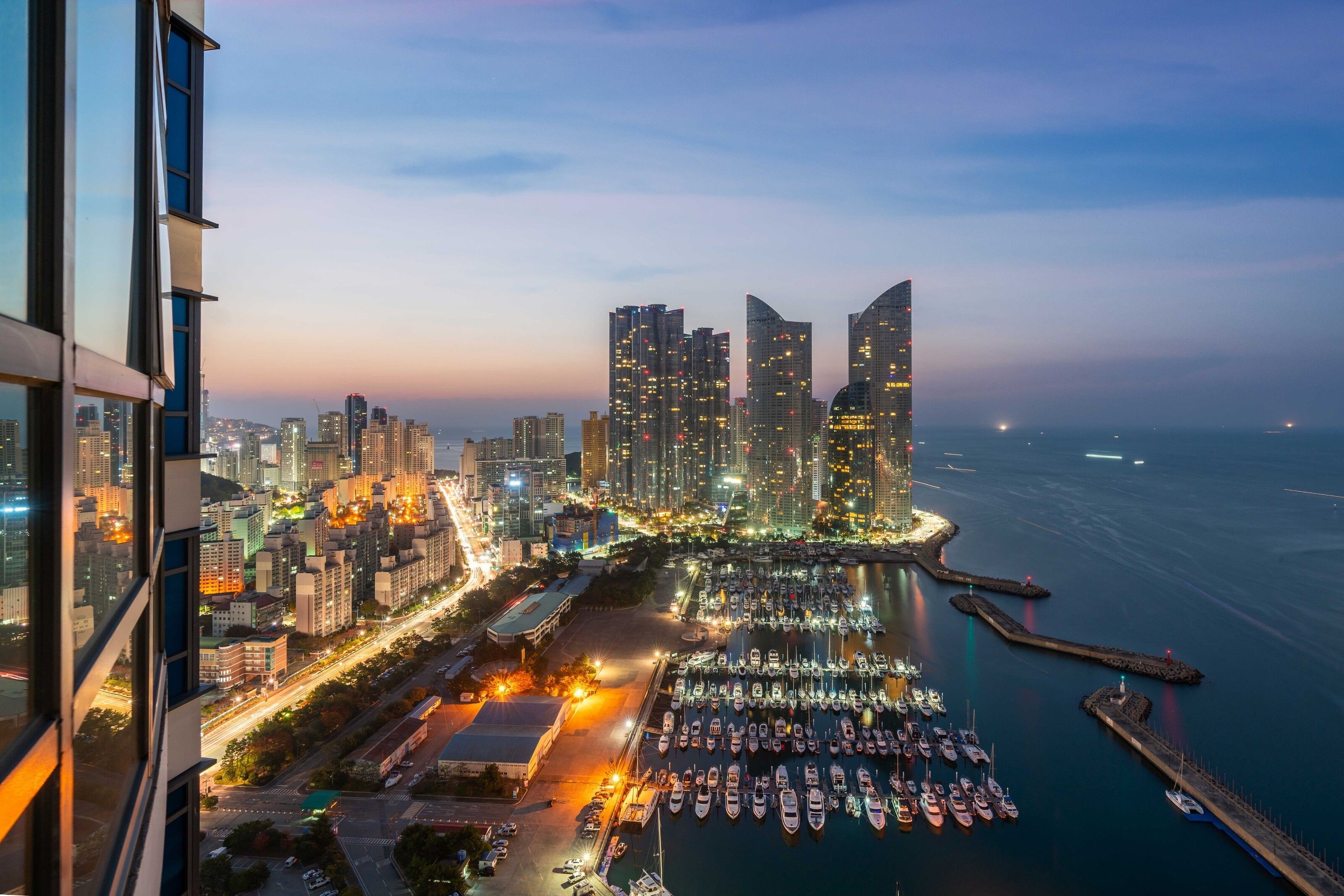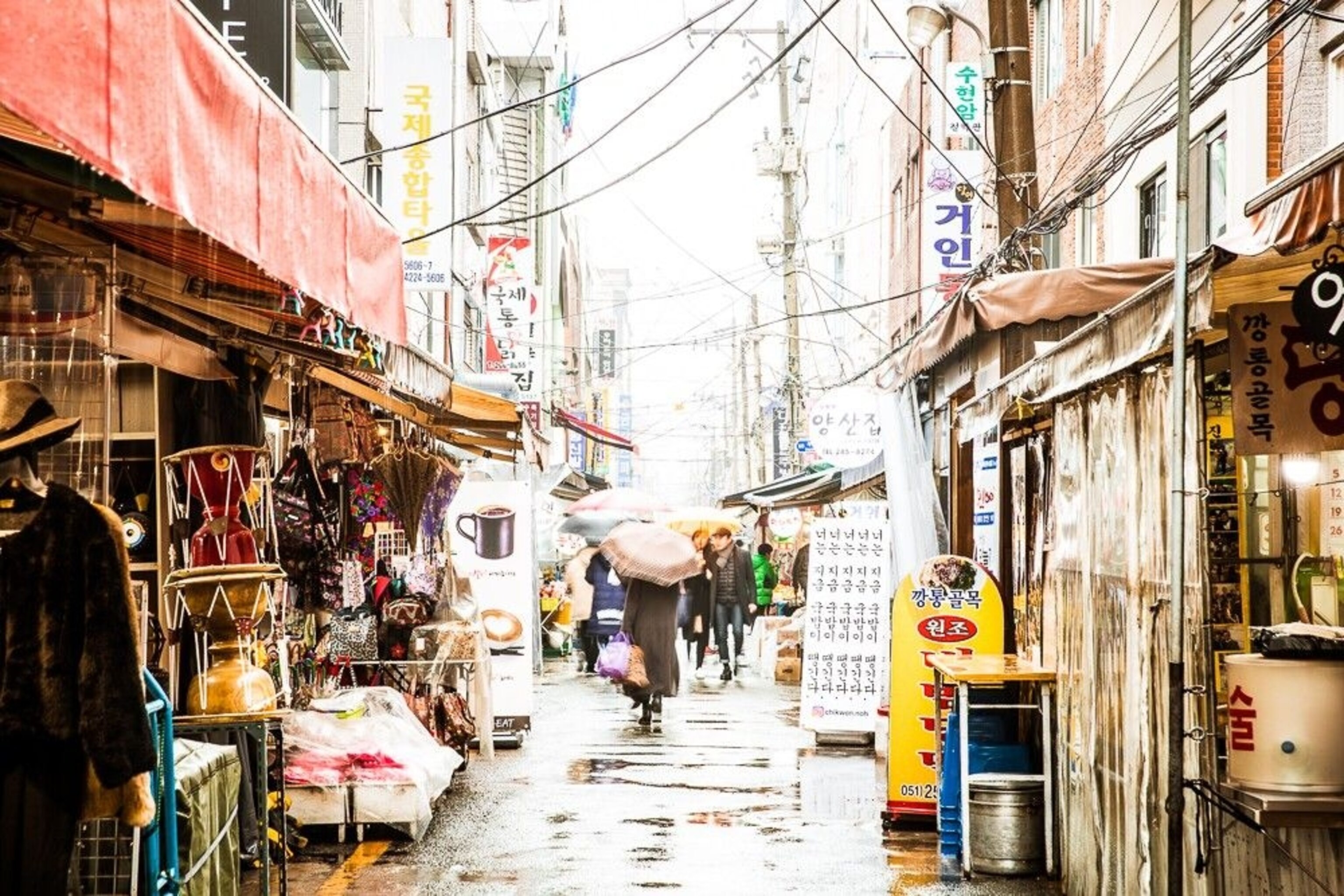
Five reasons to work remotely in Busan, South Korea
Whether you’re a seasoned digital nomad or new to freelancing, South Korea’s second city offers remote workers something a little different.
With incredible views, wonderful beaches, quick internet and cheaper prices than the capital of Seoul, South Korea’s second city, Busan, is quickly becoming a draw for the digital nomad set. Here are five reasons why you should consider spending some time working in this ultra-modern, vibrant Asian hub.
1. Nature’s splendour
While Busan is a buzzing, high-tech, 21st-century metropolis, it’s also surrounded by gorgeous natural scenery. The city is home to many stunning beaches, including two of the most famous in the country: Haeundae and Gwangalli. Both of these seashores are bordered by countless cafes where you can plug in, take in the million-dollar view, and get to work. When it’s time for a break, just step outside, and unwind and clear your head as you taste the ocean air and listen to the waves lap the sand.
That said, Busan is about much more than coastal goodness. The buildings share the skyline mountains, all of which are criss-crossed by a spider’s web of hiking trails. These ancient hills are also home to most of the city’s Buddhist temples, which sit on the slopes, tucked away among the pines. Getting up on a mountain is an easy thing to do most anywhere in Busan, and once you climb out of the chaotic hum of the city into a quieter land of rocks, wind and trees, you’ll realise that serenity is always just a short hike away.

2. No need for a car
South Korea is home to one of the planet’s fastest, most efficient transportation networks, and Busan is no exception. The city has a state-of-the-art subway system with six separate lines capable of delivering you most anywhere in the city, quickly and cheaply. Trains run often and on time, and the wi-fi-supplied stations and cars are very fast. Buses are also numerous in Busan, and taxis are not only affordable, but surprisingly trustworthy. In addition, there’s an efficient bicycle infrastructure, with well-maintained riverside paths stretching from one end of the city to the next.
Busan is also connected to the rest of the country by a high-speed train network. Seoul is just two-and-a-half hours away on the Korea Train Express (KTX), with other destinations such as Daegu, Gyeongju, Ulsan and Changwon within easy reach.

3. Terrific facilities
Koreans have embraced café culture, which means wherever you are in Busan, you’re never more than a short walk away from a coffeehouse. Korean cafes are almost always spacious, well-lit and perfectly clean, with reliable, complimentary wi-fi that moves at lightning speed. Locals are also very used to people rolling up, ordering a drink and working or studying all day. If more traditional offices are more to your liking, the city is also home to several shared workspaces, such as Nomad, FABLAB and WeWork.
4. Easy on the wallet
While South Korea certainly isn’t the cheapest place in East Asia, the cost of living is significantly less than what you’d pay in most Western countries, and Busan is much more affordable than its big brother, Seoul. There are restaurants everywhere and, if you largely stick to Korean food, you’ll find that eating out is not just a steal, but cheaper than cooking for yourself. Transportation is incredibly affordable, and the price of local beer just may have you jumping for joy. Best of all, if you’re willing to sacrifice a bit of space, you’ll find that the rent won’t even make you break a sweat.

5. East and Southeast Asia on your doorstep
Korea is situated right in the middle of a fascinating geographical area, with Busan closer to most foreign destinations than the capital, Seoul. Served by Gimhae International Airport, the west coast of Japan is just an hour away by plane; Shanghai and Taipei are only a two-hour flight, while both Manila and Hanoi clock in at four. Whether it’s skiing in Hokkaido, walking on the Great Wall, eating noodles in Taiwan, or kicking back on the white-sand beaches of Boracay, Busan is a perfect base from which you can explore the rest of East and Southeast Asia. It’s exciting enough to be a destination in and of itself, but also so practical and convenient that you’ll recognise it straightaway as a place to live, not just to visit.
Plan your trip
Korean Air and Asiana Airlines both offer daily nonstop flights from Heathrow to Seoul’s Incheon Airport. From Incheon Airport, it’s just an hour flight south to Busan. You can also reach Busan via train. The KTX Express Train takes 2.5 hours from Seoul to Busan.
For more information, visit visitbusan.net/en
Follow National Geographic Traveller (UK) on social media




